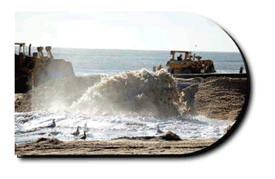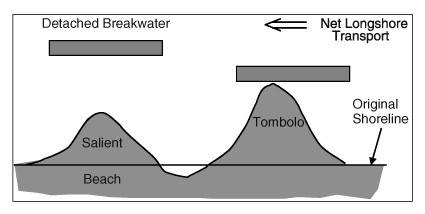Shore Protect Team Fundamentals Explained
Shore Protect Team Things To Know Before You Buy
Table of ContentsOur Shore Protect Team PDFsThe Buzz on Shore Protect TeamShore Protect Team Can Be Fun For AnyoneEverything about Shore Protect TeamAbout Shore Protect TeamThe Best Strategy To Use For Shore Protect TeamSee This Report about Shore Protect Team
Decline in residential or commercial property worth: As the area tourist is impacted by disintegration, so then is the economy. Purchasers are less likely to look for a beach residence that might be destroyed at any minute by the impending flooding and disintegration emergency. Consequently, home worth can drop immensely and impact the whole region.Whether a beach is simply small and congested or has to shut entirely for the security of the community and close-by properties, this considerably influences tourism. In turn, local economic situations are influenced (https://rentry.co/shrprtcttm). Threat of injury: The increased threat of flooding and structural failings creates an enhanced threat of injury to nearby vacationers and community members

is home to greater than 84,240 miles of coast with 41% of it exposed to the open ocean. Coastal engineers are in cost of securing the shore against modifications by lessening the detrimental impacts of both natural and manufactured incidents. Coastline stabilization is directly associated to their task. Beachfront hotels: Since coastline disintegration effects tourist, it influences the success of waterfront hotels.
Get This Report on Shore Protect Team
This ultimately brings about closures and abandoned beachfront homes. Coastal commercial services: No tourists suggests no company. For those businesses dealing with citizens, their property goes to risk of damages from erosion and flooding. Coastal state parks: State parks that exist along coasts go to threat of damages. Not just to the manufactured frameworks and residential properties on site, however also to the all-natural environments that exist within.
Tough stabilization uses manufactured structures as security to manage disintegration. Most types of tough stablizing like seawalls and sheet steel are not suitable for coastline stablizing.
The 10-Second Trick For Shore Protect Team
There's likewise inadequate evidence of their performance relying on the kind of coastline and regional conditions. Tough stablizing techniques often tend to be much more hard to set up and do not match the all-natural visual, protruding like an aching thumb and hurting neighborhood ecosystems in several situations. Beach nutrients is the process of including shed sand and debris back to coastlines after erosion has actually occurred.
TrapBags aid in the procedure of beach nutrients by protecting natural environments and permitting plants to grow. They're: Environmentally pleasant: You can use native dirt both to surround and to fill up the TrapBags.

How Shore Protect Team can Save You Time, Stress, and Money.
Easy to mount: Alleviate of installment implies TrapBags can be deployed rapidly in the occasion of an emergency. They can also be installed without any heavy equipment. Inexpensive: TrapBags are optimal for both little and large locations of coastline. They give an inexpensive option to cover projects of any type of size.
Combined with a high building and construction expense, this has actually led to raising use other soft engineering coastal administration options such as coastline replenishment. Seawalls are built from numerous materials, the majority of commonly enhanced concrete, stones, steel, or gabions. Various other feasible construction materials consist of vinyl, timber, light weight aluminum, fiberglass composite, and naturally degradable sandbags made of hemp and coir. The proper seawall layout counts on location-specific aspects, including surrounding erosion processes. There are 3 major sorts of seawalls: vertical, rounded, tipped, and piles (see table listed below). A report released by the United Nations Atmosphere Program (UNEP) suggests that the tsunami of 26 December 2004 created much less damage in the areas where all-natural obstacles existed, such as mangroves, reef or seaside plant life.
All-natural barriers, such as coral reefs and mangrove forests, stop the spread of tidal waves and the circulation of seaside waters and minimized the flooding and rise of water. A cost-benefit strategy is an effective way to figure out whether a seawall is ideal and whether the advantages are worth the cost.
An Unbiased View of Shore Protect Team
A seawall is a fixed feature which can contravene the vibrant nature of the coast and restrain the exchange of debris in between land and sea. The table listed below summarizes some positive and negative impacts of seawalls which can be utilized when comparing their performance with other seaside monitoring alternatives, such as coastline nourishment. [] Benefits and downsides of seawalls according to Short (1999) Benefits Downsides Long-term solution in comparison to soft coastline sustenance.

This can cause beaches to dissipate, rendering them worthless for coastline goers. Typically, seawalls can be a successful method to control coastal erosion, yet only if they are constructed well and out of products that can withstand the pressure of ongoing wave energy.
The 15-Second Trick For Shore Protect Team
Incorporated with a high building and construction cost, this has actually brought about increasing usage of various other soft engineering seaside monitoring options such as beach replenishment. Seawalls are created from numerous materials, many typically reinforced concrete, stones, steel, or gabions. Other feasible construction products consist of plastic, wood, light weight aluminum, fiberglass composite, and biodegradable sandbags constructed from hemp and coir. The suitable seawall layout depends on location-specific facets, including surrounding disintegration processes. There are three primary kinds of seawalls: upright, rounded, stepped, and piles (see table below). A record released by the United Nations Atmosphere Program (UNEP) suggests that the tsunami of 26 December 2004 created much less damages in the areas where all-natural barriers were existing, such as mangroves, reef or coastal plant life.
All-natural barriers, such as coral reefs and mangrove woodlands, protect against the spread of tidal waves and the circulation of coastal waters and mitigated the flood and rise of water. A cost-benefit method is an efficient means to figure out whether a seawall is proper and whether the advantages are worth the cost.
See This Report about Shore Protect Team
A seawall is a fixed function which can conflict with the dynamic nature of the shore and hamper the exchange of debris between land and sea. The table listed below summarizes some favorable and adverse effects of seawalls which can be utilized when contrasting their performance with other coastal monitoring alternatives, such as coastline nutrients. [] Advantages and negative aspects of seawalls according to Short (1999) Benefits Downsides Long-term solution in contrast to soft coastline nutrients. affordable bulkhead.

This can create beaches to dissipate, making them worthless for coastline goers. Typically, seawalls can be a successful means to control coastal erosion, however only if they are built well and out of products that can endure the pressure of continuous wave power.